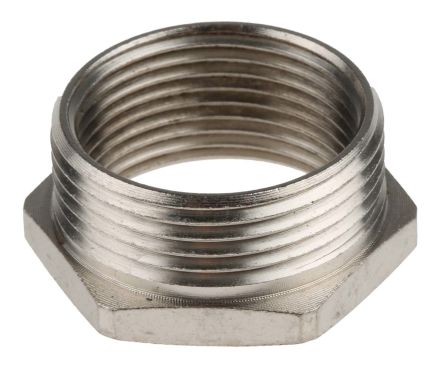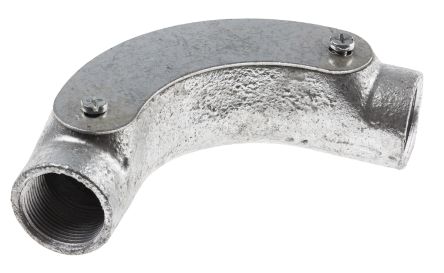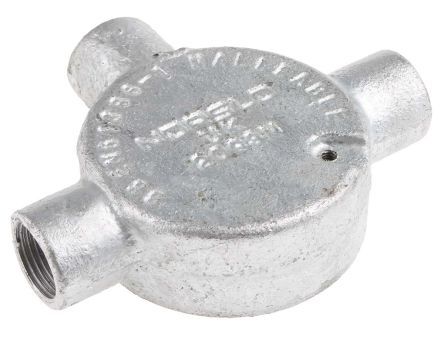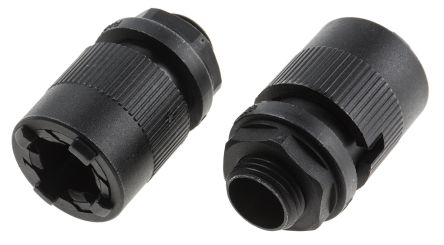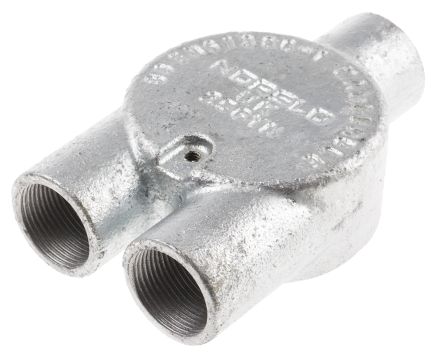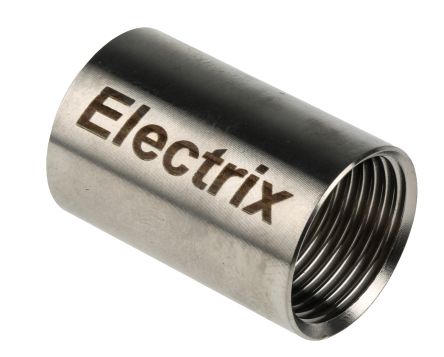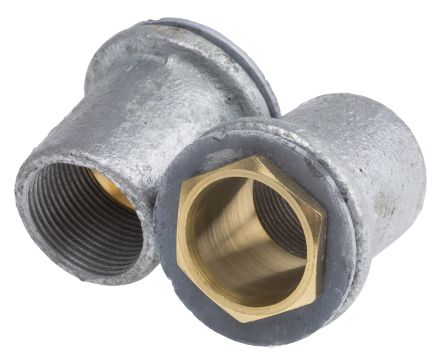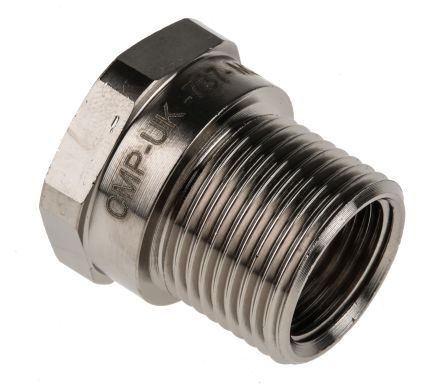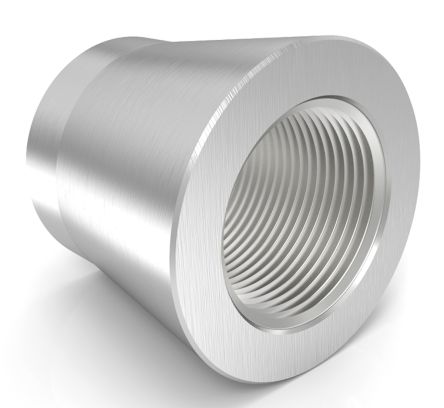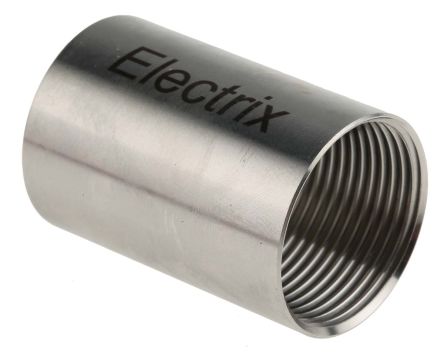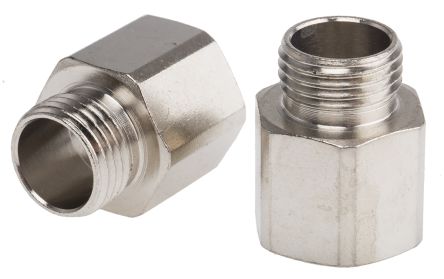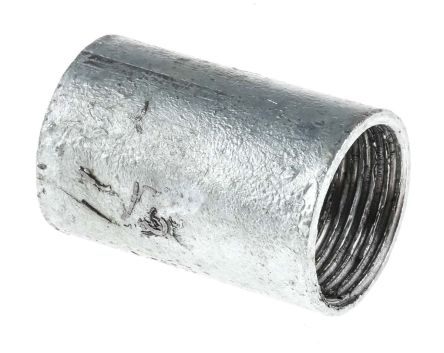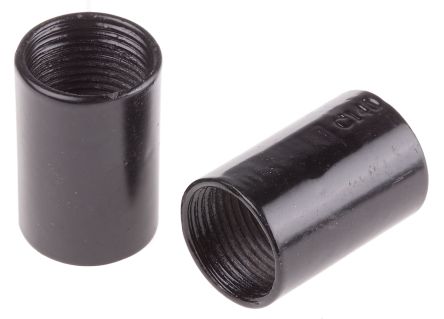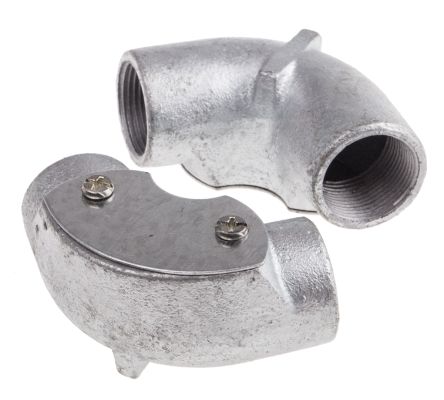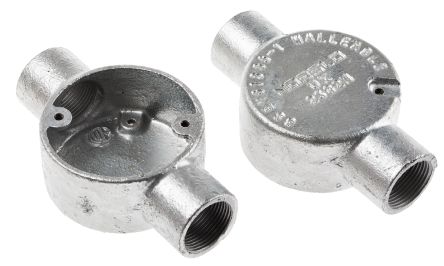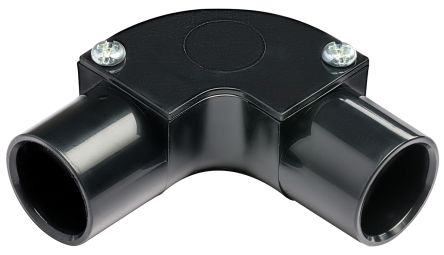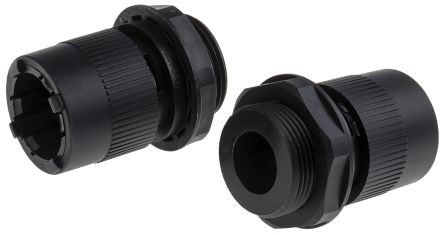- Automation & Control Gear
- Cables & Wires
- Enclosures & Server Racks
- Fuses & Circuit Breakers
- HVAC, Fans & Thermal Management
- Lighting
- Relays & Signal Conditioning
- Switches
- Batteries & Chargers
- Connectors
- Displays & Optoelectronics
- ESD Control, Cleanroom & PCB Prototyping
- Passive Components
- Power Supplies & Transformers
- Raspberry Pi, Arduino, ROCK, STEM Education & Development Tools
- Semiconductors
Conduit Fittings
Electrical conduit fittings are essential components in constructing and maintaining electrical systems. These fittings are used as conduit connectors to enclosures or boxes of various sizes and are crucial for the connection of one conduit with another or to connect a conduit with an electrical box.
Simply put, these small devices, known as conduit fittings, are used to join cable conduits and to link them to other objects, such as electrical boxes, enclosures, or electrical gadgets. Conduit fittings help protect and route electrical wires and cables within electrical cable conduits and systems. They come in various types including adaptors, couplings, locknuts, and grommets, each serving a specific purpose. For instance, adaptors are used for attaching and securing cables, while couplings facilitate the extension of conduits.
Electrical conduit connectors are available in different nominal sizes, thread sizes, and colours, and can have finishes such as galvanised or stainless steel to enhance durability and resistance to environmental factors.
The different specifications of conduit fittings include:
- Fitting Type: Options include adapter, circular lid, conduit clip, corrugated conduit, coupler, end sleeve, flexible fitting, inspection bend, locknut, straight coupler, and more.
- Nominal Size: Ranges from 21/22mm to 150mm. Also available in NW48.
- Thread Size: Available in various sizes, including 1.5mm, M12, 16mm, 25mm, and PG29
- Colour: Available in black, brass, clear, grey, metal, metallic, natural, nickel, orange, silver, steel, white, and yellow.
Features & Advantages of Conduit Fittings
Conduit fittings, including brass conduit fittings and nylon conduit fittings, are crafted from durable materials such as galvanised steel, rubber, and metal. There are PVC conduit fittings as well. These fittings are ideal for routing cables and wires through underground passages or providing protection for cables exposed to open environments, thanks to their long-lasting durability.
Steel conduit fittings are employed in all residential and commercial buildings, particularly for outdoor wiring and cable. To provide additional cable protection, particularly for the electrical cable inside of a conduit, it's crucial to choose a suitable fitting.
When choosing a fitting and a conduit to provide security for your entire conduit system, it's crucial to consider an IP rating recognised in the industry, such as IP65.
Types of Conduit Fittings
Depending on the size of your cable conduit, a variety of mm sizes are available for conduit fittings. Additionally, you can choose from a range of fitting kinds, such as:
- Curved and Elbow Conduit Fittings: These are used to manage directional changes in a conduit's path. They are available in various lengths and degrees of curvature. Some tubings can be bent manually, mechanically, or, for larger ones, hydraulically. Nevertheless, bending conduits on-site could harm them or lower their internal diameter if an installation calls for several bends.
- Straight Connectors (Conduit Bodies): These tubular units are used to connect lengths of conduit safely. They are also known as conduit bodies. These are tubular units with openings for conduit admission and wire access at each end. There are several designs, and you can discover conduit bodies that unite two conduits in a straight line, bend them at an angle of 90 degrees, or combine two conduits of various types or sizes. Even the cable access point can be covered with screws or left exposed.
- Bushings: Bushings are put within the boxes and threaded into the end of the conduit. Bushings prevent the conductors from being harmed during wire pulls by creating a smooth entry point to conduits without sharp edges. They become even more crucial when the conduit system enters an enclosure or bus box.
- Adaptors: Essential for the attachment and securing of cables and wires within the system.
- Other Fittings: Some of the other cable conduit fittings available are threaded couplers, gaskets, flanges, clamps, locknuts, spacers, and inspection fittings. Conduit couplings are necessary for practically every coupling system to connect conduit lengths and join bends constructed on-site firmly. There are many sizes of couplings, and some, like stiff conduit couplings, have internal threads.
Industrial Applications of Electrical Conduits
Electrical conduit fittings find extensive applications across various industries. They are crucial in manufacturing facilities, power plants, and commercial buildings where protection of wiring systems from environmental hazards and mechanical damage is necessary.
For example, in the automotive industry, flexible conduit connectors are used to route wiring throughout vehicles, protecting against heat and abrasion. Similarly, in the construction industry, they are used to house the electrical wiring in new buildings, ensuring safety and compliance with electrical codes.
How to Order Electrical Conduits from RS?
RS is a trusted distributor of a wide range of high-quality electrical conduit fittings and other connectors from top brands like RS PRO, Adaptaflex, Clipsal Electrical, Flexion, and more. Order your electrical conduits and other necessities like cable ducts through the RS website or via phone, email, or fax. After placing your order, the next step is to wait for a confirmation from RS.
Once your order is on its way, RS will send you a notification to inform you of the dispatch. In cases where your order is handled by multiple couriers, it's important to stay updated on any transfers between carriers. RS will also provide you with delivery updates to keep you informed. Don’t forget to confirm the receipt of your delivery by affixing your signature.
Delivery Information for Australia
RS provides efficient delivery services across Australia. Experience seamless delivery nationwide with RS Australia. Order by 5 pm AEST Mon-Fri for next-day delivery on locally stocked items. Note that certain regional areas may have longer lead times. Orders with special requirements, like hazardous materials or oversized items, may incur additional lead times. For more information, please refer to the RS delivery information page.
Popular Searches
Related links
- Conduit
- Clipsal Electrical Adapter 20mm Nominal Size PVC, Grey
- Clipsal Electrical 20mm Nominal Size PVC, Grey
- Clipsal Electrical Inspection Tee 20mm Nominal Size PVC, Grey
- Clipsal Electrical Coupler 20mm Nominal Size PVC, Grey
- Clipsal Electrical Female Bush 20mm Nominal Size PVC, Grey
- Clipsal Electrical Conduit Plug 40mm Nominal Size PVC, Grey
- Clipsal Electrical Adapter 40mm Nominal Size PVC, Grey
